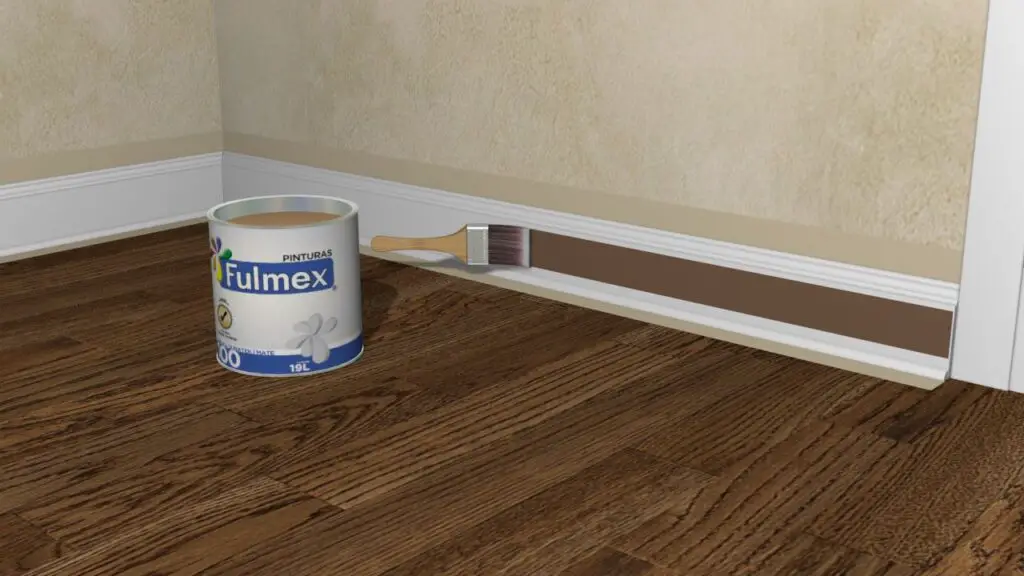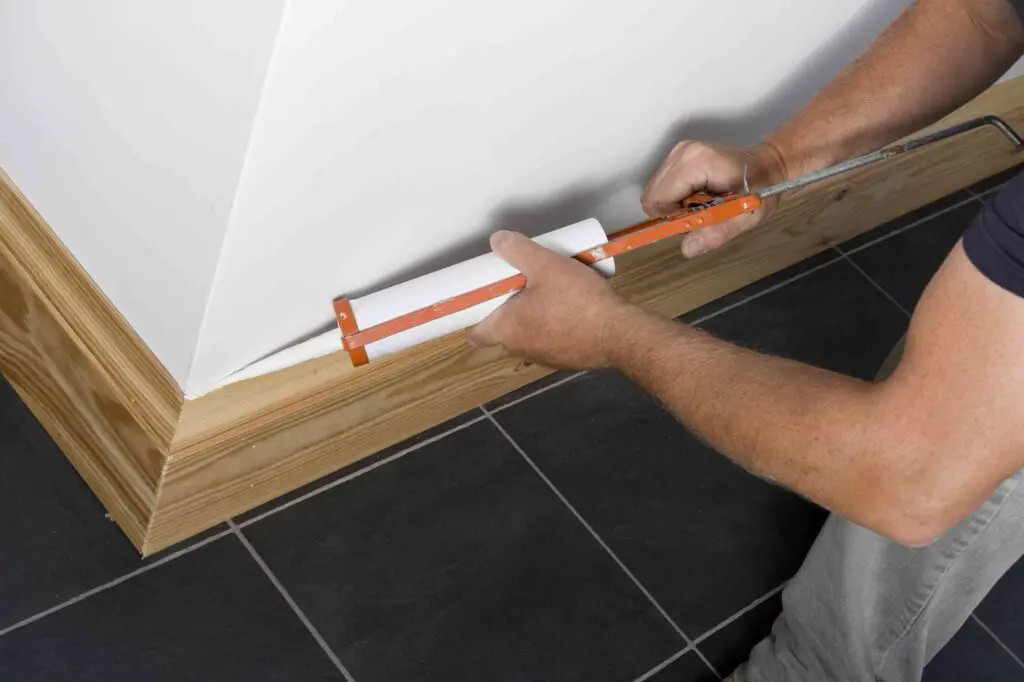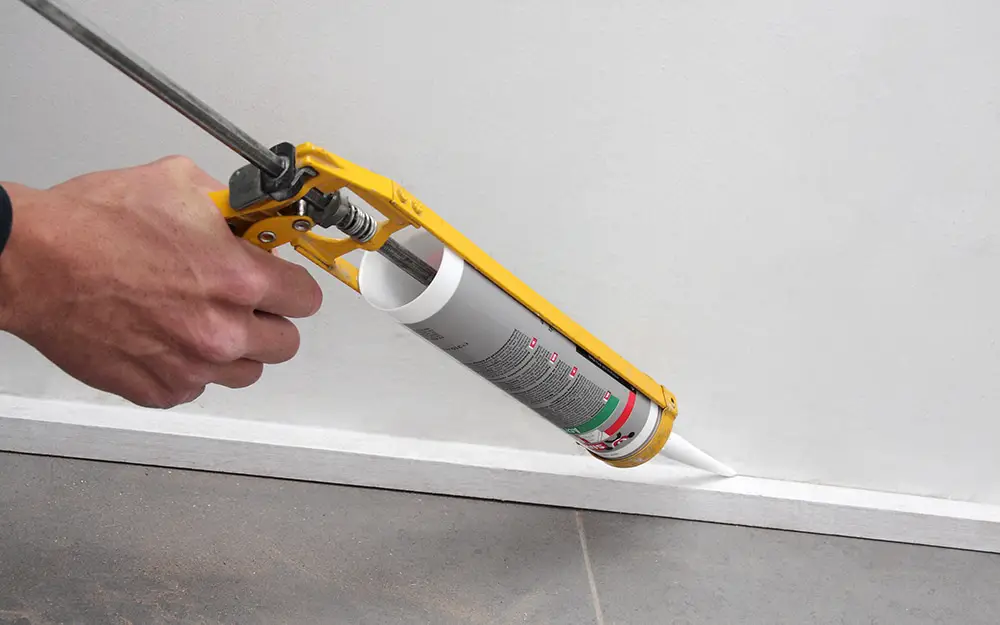How To Seal Baseboards From Bugs
Introduction
How To Seal Baseboards From Bugs: Baseboards are an essential part of any home, providing a finishing touch to the walls and floors. However, they can also be a prime entry point for bugs and pests. If you’ve noticed an increase in insect activity around your baseboards, it’s important to take action to seal them off and prevent further infestations. In this article, we will explore effective methods to seal baseboards from bugs and keep your home bug-free.
Firstly, it’s important to understand why bugs are attracted to baseboards in the first place. Baseboards provide a warm and dark environment, making them an ideal hiding spot for bugs such as ants, cockroaches, and spiders. Additionally, baseboards often have small gaps and cracks that bugs can easily squeeze through, allowing them access to your home. By sealing off these entry points, you can significantly reduce the chances of bugs making their way into your living space.
One effective method to seal clean baseboards from bugs is by using caulk. Caulk is a flexible material that can be easily applied to gaps and cracks in your baseboards. It creates a barrier that bugs cannot penetrate, effectively sealing off their entry points. Before applying caulk, it’s important to thoroughly clean the baseboards and remove any existing caulk or debris. Once the surface is clean and dry, apply a thin bead of caulk along the gaps and cracks, using a caulk gun or your finger to smooth it out. Allow the caulk to dry completely before painting or touching the baseboards.

How do you seal baseboards to keep bugs out?
Bugs will stay out of your home if you seal the walls. Small cracks and holes in the baseboards make it easy for bugs to get in. Sealing these areas can help keep them out. You can seal the walls in a number of ways to keep bugs out.
One way is to fill in any holes or cracks in the walls with caulk. Caulk is a stretchy substance that is simple to use to cover up small holes. To make sure the caulk sticks well, the area should be cleaned well before putting it. Once the area is clean, use a caulk gun or your finger to smooth out a thin bead of glue along the crack or gap. Wait until the caulk is fully dry before painting or adding any other finishes.
It’s important to check your baseboards often for damage or signs of wear. You should close any cracks or holes you find right away to keep bugs out of your home. If you seal your walls in these steps, you can keep bugs out and keep your home bug-free.
How do you get rid of bugs in baseboards?
There are times when getting rid of bugs in baseboards is hard and annoying. It’s important to know what you’re up against because different pests need different ways to be treated. Ants, cockroaches, termites, and silverfish are some of the most common bugs that can get into corners. Once you know what kind of pest it is, you can choose the best way to get rid of it.
Use of insecticides is a good way to get rid of bugs in walls. Make sure to clean the baseboards well to get rid of any dust or other dirt before you use the insecticide. Pay close attention to the directions on the insecticide label and make sure to wear gloves and protection clothing.
You don’t have to use insecticides to get rid of bugs in baseboards. You can also try natural treatments. Could, for instance, mix vinegar and water and spray it along the edges. The strong smell of vinegar can keep bugs away and keep them from coming back. Putting diatomaceous earth along the walls is another natural way to help. This substance is made from the fossilized remains of small aquatic creatures. It can dry out bugs and kill them quickly. It is important to take steps to keep the pests from coming back after you have gotten rid of them. To keep bugs from coming back, you can make sure that these steps are taken before they happen.
Will caulking baseboards keep bugs out?
Yes, caulking baseboards can help keep bugs out of your home. By sealing these gaps with caulk, you can create a barrier that prevents bugs from entering your home.
Caulking baseboards is a simple and effective way to keep bugs out. When bugs enter your home, they can be a nuisance and potentially cause damage. They can contaminate your food, leave behind droppings, and even bite or sting you and your family members. By caulking baseboards, you can significantly reduce the likelihood of bugs entering your living space.
Another advantage of caulking baseboards is that it helps improve the energy efficiency of your home. By sealing these gaps with caulk, you can prevent air leakage and improve the insulation of your home. This not only helps keep bugs out but also saves you money on your energy bills.
It is important to note that caulking baseboards is not a foolproof method for keeping bugs out. While it can significantly reduce the likelihood of bugs entering your home, it may not completely eliminate the problem. Bugs can still find other entry points, such as windows, doors, and vents.
What is the best caulk to keep out bugs?
When it comes to keeping bugs out of your home, choosing the right caulk is essential. Caulk is a sealant that is used to fill gaps and cracks in various surfaces, preventing insects from entering your living space. However, not all caulk is created equal when it comes to bug prevention. Some caulk products are specifically designed to repel bugs and provide an extra layer of protection for your home.
One of the best caulk options for keeping out bugs is silicone caulk. Silicone caulk is a durable and flexible sealant that is resistant to moisture and mold. Silicone caulk is also long-lasting and can withstand extreme temperatures, making it ideal for both indoor and outdoor use.
Another effective caulk option for bug prevention is acrylic latex caulk. Acrylic latex caulk is a water-based sealant that is easy to apply and dries quickly. Acrylic latex caulk is also paintable, allowing you to match it to your existing decor.
When choosing a caulk for bug prevention, it is important to consider the specific needs of your home. These caulks often contain insecticides or repellents that provide an extra layer of protection against bugs.
In addition to choosing the right caulk, proper application is key to keeping bugs out. It is important to thoroughly clean and dry the area before applying caulk to ensure a strong bond. Additionally, make sure to fill all gaps and cracks completely to prevent bugs from finding alternative entry points. Regularly inspecting and reapplying caulk as needed will help maintain a bug-free home.
What can I spray on baseboards for bugs?
There are several options for spraying baseboards to get rid of bugs. One effective solution is to use an insecticide spray specifically designed for indoor use. These sprays typically contain chemicals such as pyrethroids or pyrethrins, which are known to be effective against a wide range of insects, including bugs that infest baseboards.
Before spraying, it is important to thoroughly clean the baseboards to remove any dust or debris that may be hiding bugs or their eggs. This will ensure that the spray can penetrate the cracks and crevices where bugs may be hiding.
When applying the spray, it is important to follow the instructions on the product label carefully. This may include wearing protective clothing, ventilating the area, and avoiding contact with the spray.
Are there any specific products or materials that are recommended for sealing baseboards against bugs?
When it comes to sealing baseboards against bugs, there are several specific products and materials that are highly recommended for their effectiveness. One popular option is silicone caulk, which provides a durable and long-lasting seal. Silicone caulk is resistant to moisture and can withstand temperature changes, making it ideal for sealing gaps and cracks in baseboards.
Another recommended product is expandable foam sealant. This type of sealant expands to fill even the smallest crevices, creating a tight barrier against bugs. It is important to choose an expandable foam sealant that is specifically designed for pest control purposes to ensure maximum effectiveness.
In addition to these products, weatherstripping can also be used to seal baseboards. Weatherstripping is typically made of rubber or foam and is applied to the bottom of doors and windows to prevent drafts. However, it can also be used along baseboards to seal gaps and prevent bugs from entering.
Are there any additional steps or precautions that should be taken when sealing baseboards to ensure maximum effectiveness against bugs?
When sealing baseboards to prevent bugs from entering, there are a few additional steps and precautions that can be taken to ensure maximum effectiveness. Firstly, it is important to thoroughly clean the baseboards before sealing them. This includes removing any dust, dirt, or debris that may be present. This will help create a clean surface for the sealant to adhere to and prevent any gaps or openings.
Another precaution to take is to inspect the baseboards for any existing cracks or gaps. These should be filled or repaired before applying the sealant. Using a caulk or sealant specifically designed for baseboards is recommended, as it will provide a durable and long-lasting barrier against bugs.
Additionally, it is important to ensure that the sealant is applied evenly and completely along the baseboards. This means covering all edges, corners, and seams. It may be helpful to use a putty knife or similar tool to ensure a smooth and thorough application. Finally, allowing the sealant to fully dry and cure before allowing any contact or movement near the baseboards is crucial for maximum effectiveness.
How frequently should baseboards be inspected and resealed to maintain protection against bugs?
Inspecting and resealing baseboards regularly is crucial to maintain effective protection against bugs. The frequency of inspection and resealing depends on various factors such as the location of the property, the level of bug activity in the area, and the quality of the initial seal. However, as a general guideline, it is recommended to inspect and reseal baseboards at least once a year.
During the inspection, carefully examine the baseboards for any signs of damage, cracks, or gaps that may have developed over time. Pay close attention to areas where baseboards meet the floor, walls, or other surfaces, as these are common entry points for bugs. If any damage or gaps are found, it is important to promptly reseal them to prevent bugs from entering
Are there any natural or eco-friendly alternatives to chemical-based sealants for sealing baseboards against bugs?
Yes, there are several natural or eco-friendly alternatives to chemical-based sealants that can effectively seal baseboards and prevent bugs from entering your home. These alternatives are not only safer for the environment but also for your health, as they do not release harmful fumes or toxins.
One natural alternative is using essential oils. Certain essential oils, such as peppermint, lavender, and tea tree oil, have strong insect-repellent properties. You can mix a few drops of these oils with water and spray the solution along the baseboards. The strong scent of the oils will deter bugs from entering your home.
Another eco-friendly option is using diatomaceous earth. This natural substance is made from fossilized remains of tiny aquatic organisms called diatoms. It is non-toxic to humans and pets but acts as a desiccant to insects, causing them to dehydrate and die. Simply sprinkle diatomaceous earth along the baseboards and in any cracks or crevices where bugs may enter.

Conclusion
Sealing baseboards is an effective way to prevent bugs from entering your home. By taking the necessary steps to seal any gaps or cracks in your baseboards, you can create a barrier that will keep bugs out and maintain a pest-free environment. This not only helps to protect your home from potential damage caused by bugs, but also ensures the health and safety of your family.
One of the key benefits of sealing baseboards from bugs is the reduction in the risk of infestations. Bugs such as ants, cockroaches, and spiders often enter homes through small openings in the baseboards. By sealing these gaps, you can significantly decrease the likelihood of these pests finding their way into your living spaces. This can save you from the hassle and expense of dealing with a full-blown infestation, which can be difficult to eradicate.
Sealing baseboards can also help to improve energy efficiency in your home. Gaps and cracks in baseboards can allow drafts to enter, leading to heat loss in the winter and cool air escaping in the summer. By sealing these openings, you can create a more airtight environment, reducing the need for excessive heating or cooling and ultimately lowering your energy bills.
Overall, sealing baseboards from bugs is a simple yet effective solution to keep your home bug-free and improve energy efficiency. By taking the time to inspect and seal any gaps or cracks in your baseboards, you can create a barrier that will prevent bugs from entering your living spaces. This not only protects your home from potential damage and infestations, but also ensures a healthier and more comfortable living environment for you and your family.








